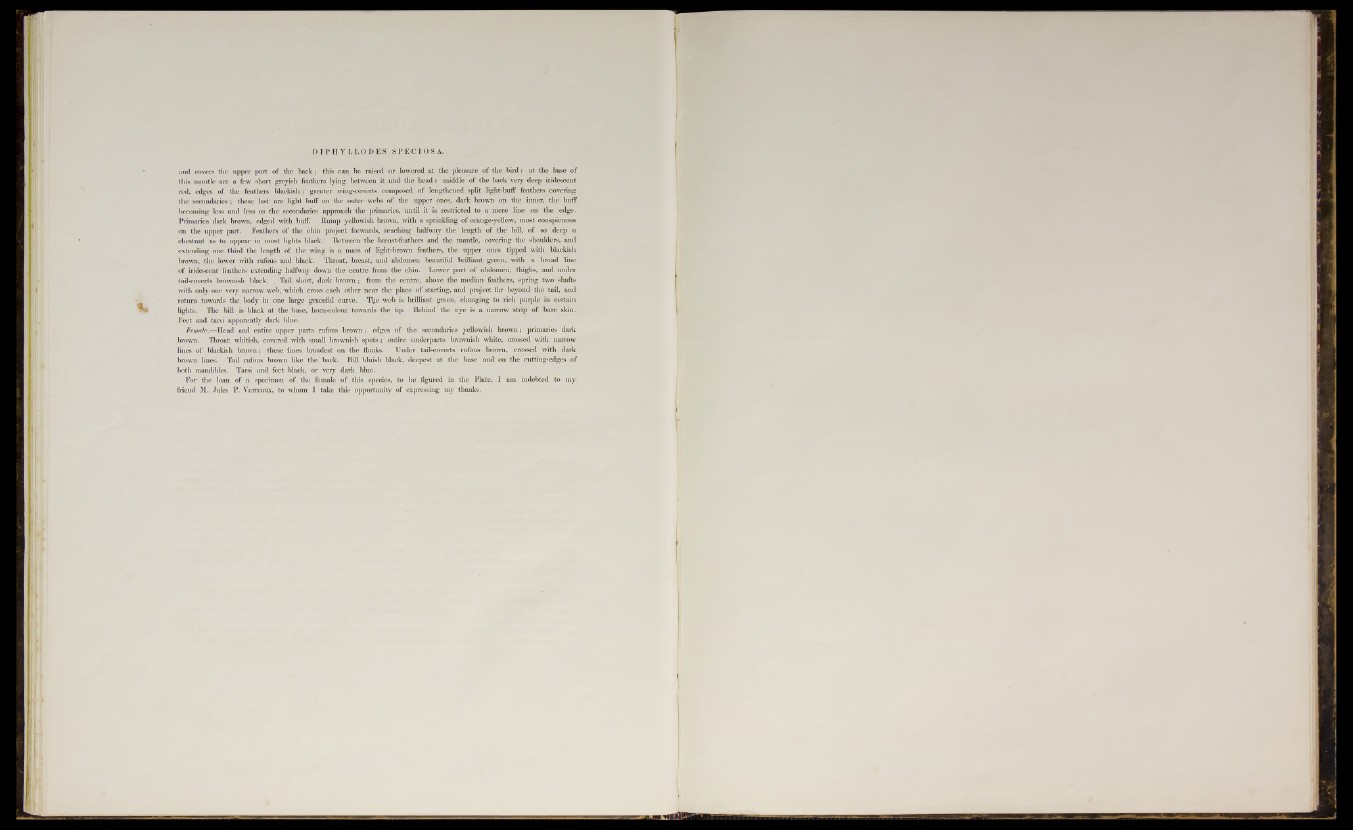
J DI PHYL LOD E S S P EC IOS A.
and covers the upper part of the back; this can be raised or lowered at the pleasure o f thq bird: at the base of
this mantle are a few short greyish feathers lying between it and the head: middle of the back very deep iridescent
red, edges of the feathers blackish; greater wing-coverts composed of lengthened split light-buff feathers covering
the secondaries; these last are light buff on the outer webs of the upper ones, dark brown on the inner, the buff
becoming less and less as the secondaries approach the primaries, until it is restricted to a mere line on the edge.
Primaries dark brown, edged with buff. Rump yellowish brown, with a sprinkling of orange-yellow, most conspicuous
on the upper part. Feathers of the chin project forwards, reaching halfway th e . length o f the bill, of so deep a
chestnut as to appear in most lights black. Between the breast-feathers and the mantle, covering the shoulders, and
extending one third the length of the wing is a mass of light-brown feathers, the upper ones tipped with blackish
brown, the lower with rufous and black. Throat, breast, and abdomen beautiful brilliant green, with a broad line
of iridescent feathers extending halfway down the centre from the chin. Lower part of abdomen, thighs, and under
tail-coverts brownish black. . Tail short, dark brown; from the centre, above the median feathers, spring two shafts
with only one very narrow web, which cross each other near the place of starting, and project far beyond the tail, and
return towards the body in one large graceftd curve. The web is brilliant green, changing to rich purple in certain
lights. The bill is black at the base, horn-colour towards the tip. Behind the eye is a narrow strip o f bare skin.
Feet and tarsi apparently dark blue.
Female.—Head and entire upper parts rufous brown; edges of the secondaries yellowish brown; primaries dark
brown. Throat whitish, covered with small brownish spots; entire underparts brownish white, crossed with narrow
lines of blackish brown; these lines broadest on the flanks. Under tail-coverts rufous brown, crossed with dark
brown lines. Tail rufous brown like the back. Bill bluish black, deepest at the base and on the cutting-edges of
both mandibles. Tarsi and. feet block, or very dark blue.
For the loan of a specimen of the female of this species, to be figured in the Plate, I am indebted to m y
friend M. Jules P. Verreaux, to whom I take this opportunity of expressing my thanks.